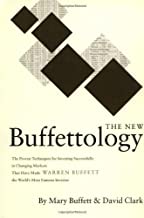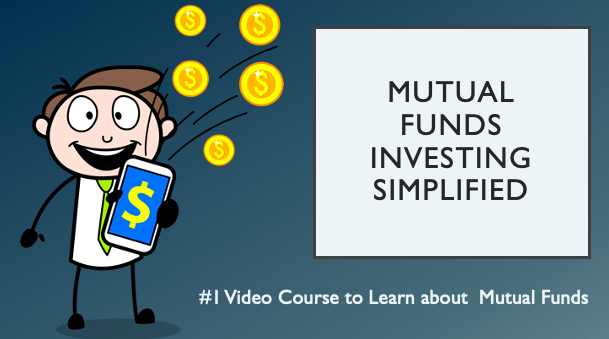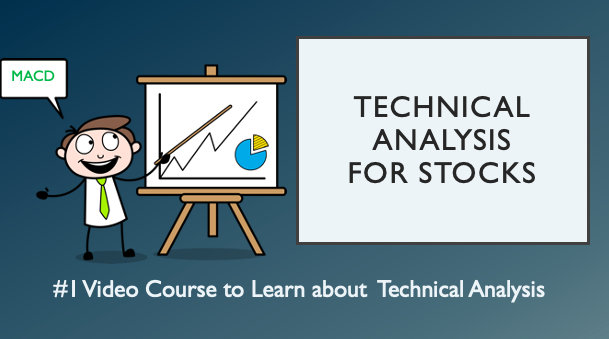Book Summary of The New Buffettology
by Mary Buffett and David Clark

What is this book about?
"The New Buffettology" by Mary Buffett and David Clark is a detailed guide that explains the investment strategies of Warren Buffett, focusing on how he exploits market inefficiencies and bad news to make profitable investments. The book covers Buffett’s selective contrarian investment strategy, which emphasizes buying shares in companies with durable competitive advantages when they are undervalued by the market. It also explains how Buffett uses specific financial metrics and equations to assess the value of potential investments and how these methods can be applied by individual investors.
Who should read the book?
This book is ideal for investors at any level who are interested in understanding Warren Buffett's investment philosophy and strategies. It is particularly useful for those who want to learn how to analyze companies, make informed investment decisions, and apply Buffett's methods to achieve long-term investment success. Additionally, it’s suitable for those who wish to learn more about value investing and the importance of patience and discipline in the stock market.
10 Big Ideas from the Book:
-
Selective Contrarian Investing: Buffett invests in companies when the market undervalues them due to pessimism, focusing on businesses with strong long-term prospects.
-
Durable Competitive Advantage: Buffett prefers companies that have a sustainable competitive edge, which allows them to maintain profitability over the long term.
-
Margin of Safety: He insists on a margin of safety by buying stocks at prices significantly lower than their intrinsic value, reducing the risk of loss.
-
Economic Moat: Buffett seeks companies with economic moats—features that protect them from competitors, such as brand strength or cost advantages.
-
Long-term Perspective: Buffett’s strategy is grounded in long-term thinking, focusing on the enduring value of businesses rather than short-term market fluctuations.
-
Focus on Quality, Not Quantity: Rather than diversifying widely, Buffett concentrates his investments in a few high-quality companies that he thoroughly understands.
-
Avoiding Market Trends: Buffett avoids following market trends or fads, instead focusing on fundamental business value and investing when others are fearful.
-
Understanding the Business: He only invests in businesses he understands well, allowing him to make more informed and confident investment decisions.
-
Intrinsic Value Calculation: The book details Buffett’s use of specific financial equations to calculate the intrinsic value of a company, ensuring he doesn’t overpay for investments.
-
Patience and Discipline: Buffett’s success is largely attributed to his patience and discipline, waiting for the right opportunities and not succumbing to market pressures.
Chapter 1: The Answer to Why Warren Doesn’t Play the Stock Market
- Summary: This chapter explains why Warren Buffett does not engage in conventional stock market trading. Instead of following trends, he focuses on the long-term value of companies and avoids the speculative behavior that dominates the stock market. Buffett prefers to invest in businesses with solid fundamentals that can withstand market fluctuations.
- Key Idea: Buffett exploits the shortsightedness of other investors who react to daily market news and trends.
Chapter 2: How Warren Makes Good Profits Out of Bad News About a Company
- Summary: Buffett’s strategy involves investing in companies when they face bad news that temporarily drives down their stock prices. He believes that short-term pessimism often undervalues strong companies, creating buying opportunities for investors who understand the long-term potential.
- Key Idea: Selective contrarian investing – buying when others are selling due to temporary bad news.
Chapter 3: How Warren Exploits the Market’s Shortsightedness
- Summary: This chapter dives into how Buffett identifies and exploits the market's shortsightedness. He categorizes businesses into those with durable competitive advantages and those in price-competitive industries. Buffett only invests in the former, as these companies are better positioned to recover from downturns.
- Key Idea: Focus on businesses with durable competitive advantages, such as brand strength or unique market positions.
Chapter 4: How Companies Make Investors Rich: The Interplay Between Profit Margins and Inventory Turnover
- Summary: The chapter explains how companies make money through high profit margins and/or high inventory turnover. Buffett looks for companies that excel in one or both of these areas. He favors companies that can charge premium prices (high margins) or sell large volumes (high turnover).
- Key Ratios:
- Profit Margin: Buffett prefers companies with consistently high profit margins. A profit margin of 20% or more is often a sign of a durable competitive advantage.
- Inventory Turnover: This measures how quickly a company sells and replaces its inventory. A high turnover rate can compensate for lower profit margins, and vice versa.
Chapter 5: The Hidden Danger: The Type of Business Warren Fears and Avoids
- Summary: Buffett avoids investing in price-competitive, commodity-type businesses that rely solely on low prices to attract customers. These businesses have low profit margins and are vulnerable to market fluctuations, making them poor long-term investments.
- Key Idea: Avoid businesses in highly competitive industries where products are indistinguishable and price is the main competitive factor.
Chapter 6: The Kind of Business Warren Loves: How He Identifies and Isolates the Best Companies to Invest In
- Summary: This chapter focuses on the characteristics of businesses that Buffett loves—those with durable competitive advantages. Such businesses typically dominate their markets, have strong brand recognition, and enjoy pricing power.
- Key Ratios:
- Return on Equity (ROE): Buffett looks for companies with a high and consistent ROE, typically above 15%. ROE is a measure of how effectively a company uses shareholders' equity to generate profits.
- Debt-to-Equity Ratio: Companies with a low debt-to-equity ratio are preferred, as they are less vulnerable to financial distress. A ratio below 0.5 is often considered strong.
Chapter 7: Using Warren’s Investment Methods to Avoid the Next High-Tech Massacre
- Summary: This chapter explains how Buffett’s investment principles helped him avoid the pitfalls of investing in high-tech companies during the dot-com boom. He stayed away from businesses with unclear profitability and focused on companies with proven, stable earnings.
- Key Idea: Avoid speculative, high-risk industries where future earnings are uncertain.
Chapter 8: Interest Rates and Stock Prices—How Warren Capitalizes on What Others Miss
- Summary: Buffett understands the relationship between interest rates and stock prices. He uses this knowledge to his advantage by buying stocks when interest rates are low, as lower rates generally make stocks more attractive relative to bonds.
- Key Ratios:
- Earnings Yield vs. Interest Rates: Buffett compares the earnings yield (inverse of the P/E ratio) of a stock to prevailing interest rates. If the earnings yield is significantly higher than interest rates, the stock is considered a good buy.
Chapter 9: Solving the Puzzle of the Bear/Bull Market Cycle and How Warren Uses It to His Advantage
- Summary: This chapter discusses how Buffett navigates bear and bull markets. He capitalizes on bear markets by buying stocks at depressed prices and holds onto them during bull markets to maximize gains.
- Key Idea: Buy during bear markets when prices are low and hold through bull markets for long-term appreciation.
Chapter 10: How Warren Discerns Buying Opportunities Others Miss
- Summary: Buffett identifies buying opportunities by thoroughly understanding the businesses he invests in and by calculating their intrinsic value. He only buys when the market price is significantly below this intrinsic value.
- Key Ratios:
- Price-to-Earnings (P/E) Ratio: A low P/E ratio relative to the industry or market average can indicate an undervalued stock.
- Intrinsic Value Calculation: Buffett uses discounted cash flow (DCF) analysis to estimate the intrinsic value of a company, ensuring a margin of safety before investing.
Chapter 11: Where Warren Discovers Companies with Hidden Wealth
- Summary: Buffett seeks companies with hidden wealth, such as undervalued assets or strong future earnings potential that the market has overlooked. These companies often offer significant upside when the market eventually recognizes their true value.
- Key Idea: Look for companies with hidden or underappreciated assets that the market has not fully valued.
Chapter 12: Warren’s Checklist for Potential Investments: His Ten Points of Light
- Summary: This chapter outlines Buffett’s ten criteria for evaluating potential investments. These include factors like management quality, financial stability, and the company's ability to generate consistent earnings.
- Key Idea: Use a systematic checklist to evaluate the investment potential of a company thoroughly.
Chapter 13: Warren’s Secret Formula for Getting Out at the Market Top
- Summary: Buffett has a strategy for selling investments when they are overvalued by the market. He typically sells when the market price exceeds the intrinsic value of the business by a significant margin.
- Key Ratios:
- Price-to-Book (P/B) Ratio: A high P/B ratio, particularly when it exceeds 2 or 3, may indicate that a stock is overvalued.
- Sell Trigger: Buffett considers selling when the market price of a stock is more than 1.5 times its intrinsic value.
Chapter 14: Where Warren Buffett Is Investing Now!
- Summary: This chapter discusses Buffett’s recent investments, showing how he applies his investment principles in the current market environment. It also explores the types of companies he is focusing on for future growth.
- Key Idea: Learn from Buffett’s current portfolio to understand where he sees value in the market.
Chapter 15: Stock Arbitrage: Warren’s Best-Kept Secret for Building Wealth
- Summary: Buffett uses stock arbitrage, which involves buying and selling stocks to take advantage of price discrepancies in the market. This strategy provides him with relatively low-risk opportunities to generate returns.
- Key Idea: Arbitrage opportunities can offer low-risk returns, particularly in merger and acquisition situations.
Chapter 16: For the Hard-Core Buffettologist: Warren Buffett’s Mathematical Equations for Uncovering Great Businesses
- Summary: This chapter goes in-depth into the mathematical formulas Buffett uses to assess the financial health and potential of companies. These include calculations for intrinsic value, compounding returns, and more.
- Key Ratios:
- Discounted Cash Flow (DCF) Analysis: Buffett uses this to estimate the present value of a company's future cash flows.
- Compounded Annual Growth Rate (CAGR): Used to evaluate the annual growth rate of an investment over a specified period of time.
Chapter 17: Thinking the Way Warren Does: The Case Studies of His Most Recent Investments
- Summary: This chapter provides case studies of Buffett’s most recent investments, illustrating how he applies his investment philosophy in real-world scenarios. The case studies offer practical examples of how to implement his strategies.
- Key Idea: Analyze Buffett’s recent investments to gain insights into his decision-making process.
Chapter 18: Putting Buffettology to Work for You
- Summary: The final chapter encourages readers to apply Buffett’s principles in their own investing. It offers practical advice on how to start, including tips on research, analysis, and decision-making.
- Key Idea: Implement Buffett’s strategies to build your own successful investment portfolio.
Key Ratios to Remember:
- Profit Margin: > 20% indicates strong profitability.
- Return on Equity (ROE): > 15% is a sign of efficient use of equity.
- Debt-to-Equity Ratio: < 0.5 suggests financial stability.
- Price-to-Earnings (P/E) Ratio: Lower than the industry average can indicate an undervalued stock.
- Price-to-Book (P/B) Ratio: High values (> 2-3) may signal overvaluation.
- Intrinsic Value Calculation: Ensure the market price is significantly below intrinsic value for a margin of safety.
- Earnings Yield: Compare with interest rates to assess stock attractiveness.
- Discounted Cash Flow (DCF) Analysis: Key for estimating intrinsic value.
- Compounded Annual Growth Rate (CAGR): Evaluates growth potential over time.
Which other books are used as reference?
The book references several other works and authors, including:
- "Security Analysis" by Benjamin Graham and David Dodd – A foundational text in value investing that greatly influenced Buffett’s investment philosophy.
- "The Intelligent Investor" by Benjamin Graham – Another classic on value investing, which introduced concepts like intrinsic value and margin of safety.
- Works by Charlie Munger – Buffett’s business partner and a key figure in shaping his investment strategies, particularly regarding mental models and rational thinking.
- Roger Lowenstein's "Buffett: The Making of an American Capitalist" – A biography of Warren Buffett that offers insights into his life and investment philosophy.
- "The Science of Hitting" by Ted Williams – A book on baseball that Buffett uses as an analogy for investment strategy, emphasizing patience and selective action.
These references are used throughout the book to support and explain Buffett's methods and to provide a broader context for his investment strategy.
Browse Summaries of Top Investing books!
You may also like the below Video Courses



